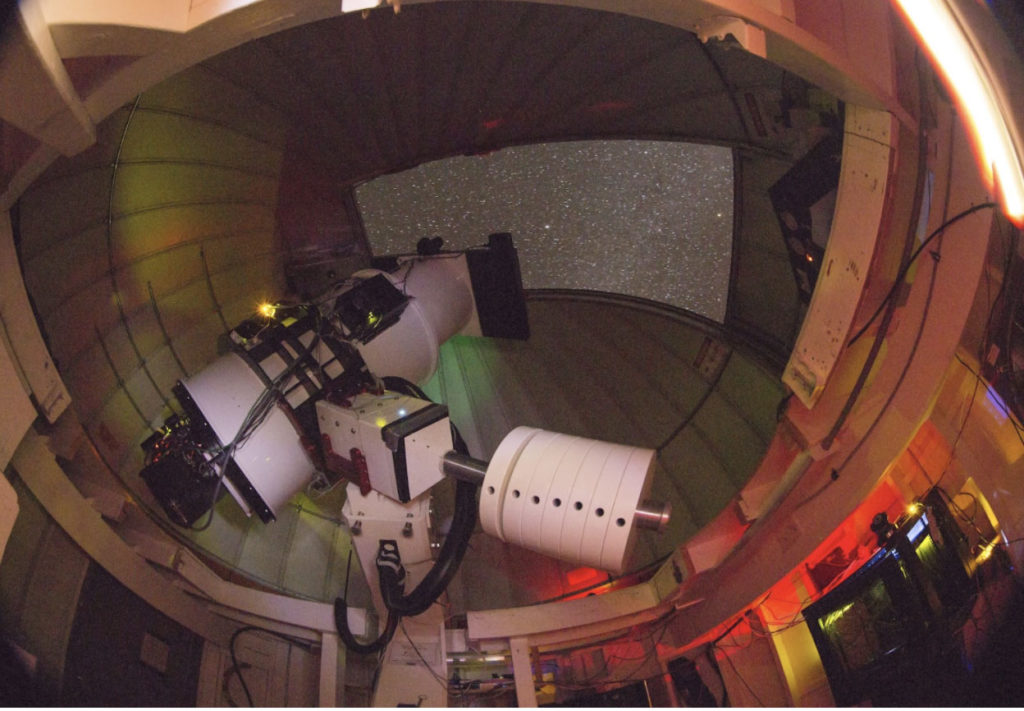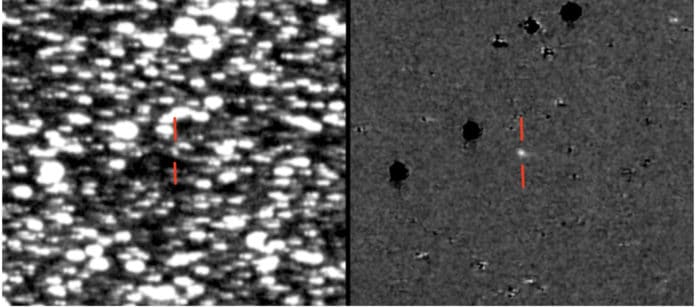Using the University of Hawaiʻi ‘s Asteroid Terrestrial-impact Last Alert System (ATLAS), astronomers have discovered a first-of-its-kind asteroid called Jupiter Trojan. The asteroid appears to have sprouted a comet-like tail.
Early in June 2019, ATLAS reported about a faint asteroid near the orbit of Jupiter. Since then, the asteroid was named as 2019 LD2.
Later, the images taken by collaborators Alan Fitzsimmons and David Young at Queen’s University Belfast uncovered about its probable cometary nature. Further observations using the Las Cumbres Observatory global telescope network confirmed the cometary nature of this body.
Next, in July 2019, ATLAS detected 2019 LD2 again with a clear view of the comet with a faint tail made of dust or gas. The asteroid passed behind the Sun, Although, and it was not observable from the Earth in late 2019. In April 2020, the comet made a reappearance. TLAS observations confirmed that it still looks like a comet. These observations showed that 2019 LD2 has probably been continuously active for almost a year.

While ATLAS has discovered more than 40 comets, what makes this object extraordinary is its orbit. The early indication that it was an asteroid near Jupiter’s orbit has now been confirmed through precise measurements from many different observatories. 2019 LD2 is a special kind of asteroid called a Jupiter Trojan – and no object of this type has ever before been seen to spew out dust and gas like a comet.
Trojan asteroids follow the same orbit as a planet but stay either around 60 degrees ahead of or 60 degrees behind along the orbit. Earth has at least one Trojan asteroid, and Neptune has dozens. Jupiter has hundreds of thousands. The Jupiter Trojan asteroids orbit the Sun in two huge swarms, one swarm orbiting ahead of the planet (where 2019 LD2 was found) and one swarm orbiting behind it.
The Trojan asteroids have been captured into these orbits by Jupiter’s strong gravity. What makes 2019 LD2 so interesting is that we think most Jupiter Trojans have captured billions of years ago. Any surface ice that could vaporize to spew out gas and dust should have done so long ago, leaving the objects quietly orbiting as asteroids – not behaving like comets.
Fitzsimmons said, “We have believed for decades that Trojan asteroids should have large amounts of ice beneath their surfaces, but never had any evidence until now. ATLAS has shown that the predictions of their icy nature may well be correct.”
